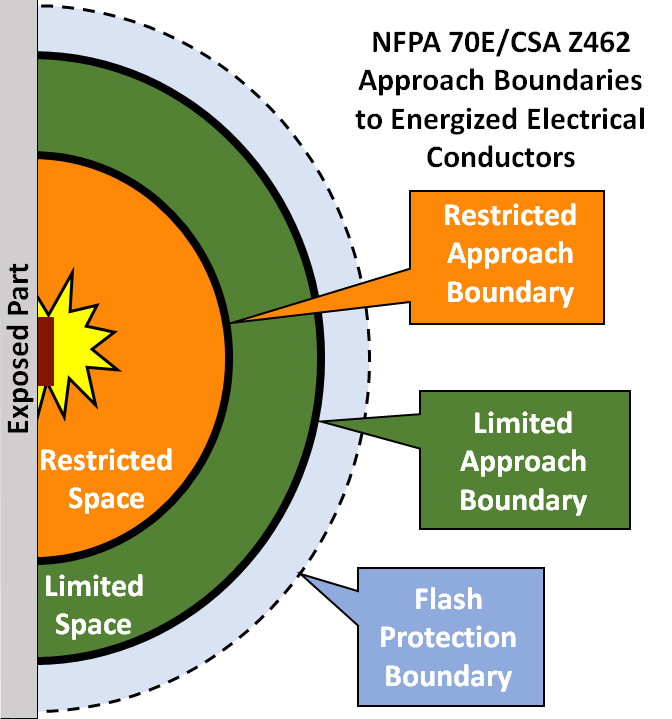Approach Boundaries
The risk from exposed live parts depends on your distance from the parts.
Three "boundaries" are key to protecting yourself from electric shock and one to protect you from arc flashes or blasts. These boundaries are set by the National Fire Protection Association (NFPA 70E) and the Canadian Standards Association (CSA Z462).
- The Restricted Approach Boundary . This boundary may only be crossed by a Qualified Person wearing appropriate PPE, as determined by the Shock Risk Assessment.
- The Qualified Person must also have an Energized Electrical Work Permit (EEWP).
- The use of shock protection techniques and equipment are required.
- To cross into the Restricted Space, the qualified person must wear appropriate PPE.
- The Qualified Person must have a written approved plan for the work to be performed and plan the work to keep all parts of the body out of the Prohibited Space.
- The Limited Approach Boundary. NFPA 70E defines the limited approach boundary as a shock protection boundary to be crossed by only qualified persons (at a distance from a live part), which is not to be crossed by unqualified persons unless escorted by a qualified person.
- This boundary is the minimum distance from the energized item where unqualified personnel may safely stand.
- No untrained personnel may approach any closer to the energized item than this boundary.
- A qualified person must use appropriate PPE and be trained to perform the required work to cross the limited approach boundary and enter the limited space.
- Flash Protection Boundary (FPB). The FPB is the farthest established boundary from the energy source and is considered a safe approach distance from energized equipment or parts.
- Only Persons wearing appropriate personal protective clothing and equipment for the Arc Flash Boundary, as determined by an Arc Flash Risk Assessment, may approach closer than the FPB.
Knowledge Check Choose the best answer for the question.
5-5. When working around high voltage components, no untrained personnel may approach any closer to the energized item than the _____.
You forgot to answer the question!

